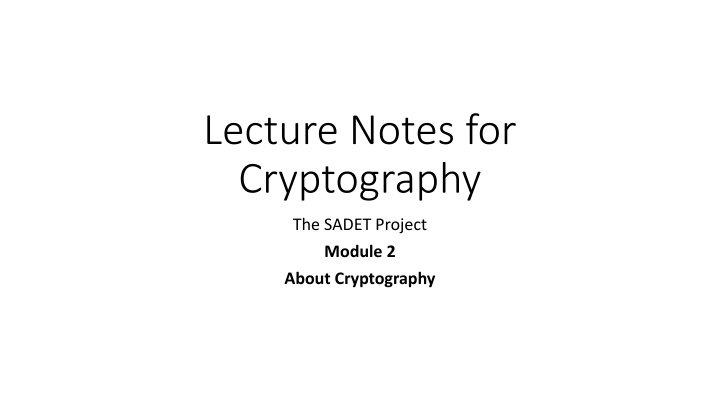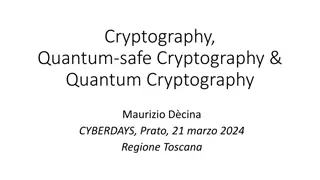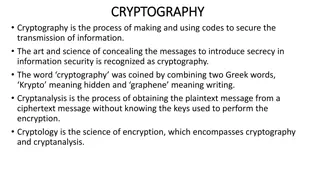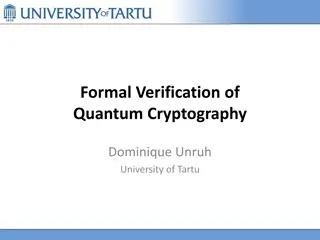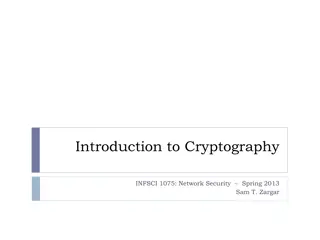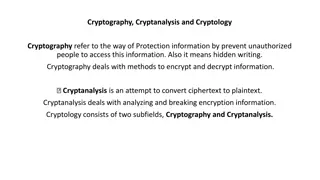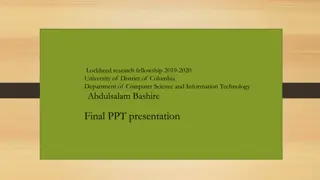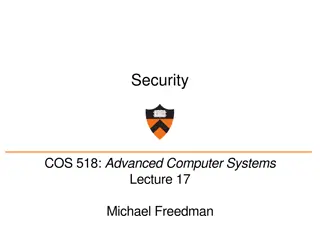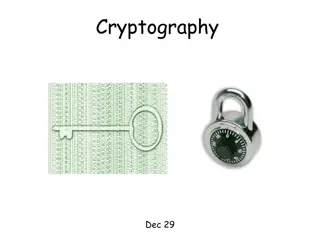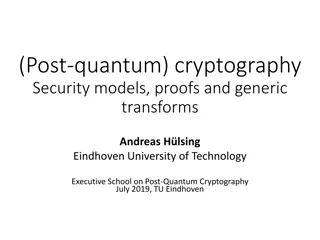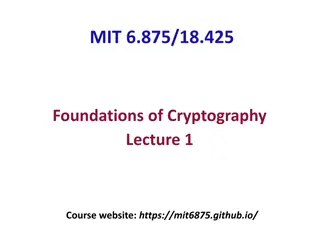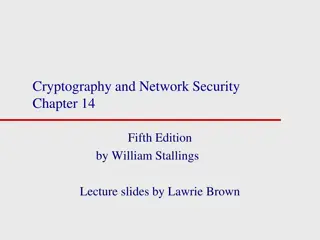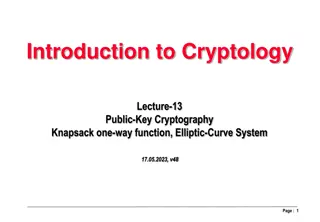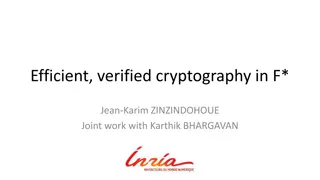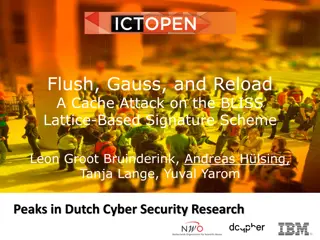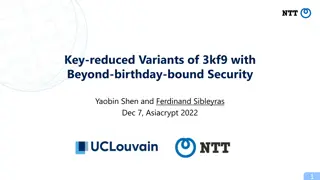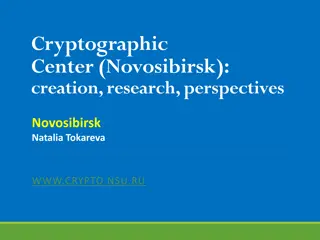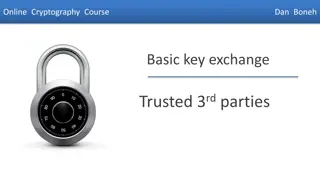SADET Project Module 2: Cryptography Lecture Notes
In this module, delve into the world of cryptography through insightful lecture notes covering conventional encryption models, practical cryptosystems, cryptanalysis, Kerckhoffs principle, and cryptanalytic attacks. Understand the importance of secure channels, key generation algorithms, and the implications of known algorithms in encryption. Learn about breaking encryption schemes, recovering plaintext, and the significance of keys in ensuring secure communication.
Download Presentation

Please find below an Image/Link to download the presentation.
The content on the website is provided AS IS for your information and personal use only. It may not be sold, licensed, or shared on other websites without obtaining consent from the author.If you encounter any issues during the download, it is possible that the publisher has removed the file from their server.
You are allowed to download the files provided on this website for personal or commercial use, subject to the condition that they are used lawfully. All files are the property of their respective owners.
The content on the website is provided AS IS for your information and personal use only. It may not be sold, licensed, or shared on other websites without obtaining consent from the author.
E N D
Presentation Transcript
Lecture Notes for Cryptography The SADET Project Module 2 About Cryptography
Conventional Encryption Model Insecure channel Alice Bob x Encrypt Decrypt y x k k Secure Channel Gen Oscar Key Source 3
Conventional Encryption II y= ek(x) : Ciphertext Encryption x = dk(y) : Plaintext Decryption k = encryption and decryption key Gen: Key generation algorithm The functions ek() and dk() must be inverses of one another ek(dk(y)) = ? dk(ek(x)) = ? ek(dk(x)) = ? 4
Practical cryptosystem Must be efficient to implement Both the encryption function ek() and the decryption function dk() must be easy to compute If Oscar sees the ciphertext y, he should not be able to Find the plaintext x Find the key k Cryptanalysis 5
Cryptanalysis The science/art of breaking an encryption scheme What do we mean by breaking an encryption scheme? Oscar can Recover plaintext from the ciphertext Recover a key that can be used to break many ciphertexts When is an encryption scheme broken? Do we need to break the encryption scheme to make a network/system insecure? 6
Kerckhoffs principle Given an encryption algorithm ek(x) = y Oscar knows the algorithm Oscar does not know the key Implications: Oscar can make intelligent guesses Oscar can try to exploit the weakness of an algorithm If the number of keys is small, Oscar can break the encryption Oscar will simply search through all possible keys Reminder: The set of all possible keys is called the key space A shortcut in the algorithm can allow Oscar to recover the keys 7
Cryptanalytic Attacks - I Ciphertext only attack Oscar has a set of ciphertexts y1, y2, y3, , yn Known plaintext attack Oscar knows the pair (xi,yi) for i = 1,2, ,n How does Oscar know the plaintext? Example IP header Chosen plaintext attack Same as known plaintext except that Oscar can choose his own xi Some plaintexts provide more information about the key than others 8
Cryptanalytic attacks - II Adaptive chosen plaintext attack Oscar can adaptively change his plaintext and chose xi based on what he has deduced about the encryption scheme Chosen ciphertext attack Oscar has temporary access to a tamperproof box that does decryption Chosen text attack A combination of chosen plaintext and chosen ciphertext attacks 9
Other security attacks Replay attack Send an encrypted message again to cause confusion or to deduce information Man-in-the-middle attack Intercept a key agreement message and create a set of compromised keys Blackmail, bribery, torture, etc. 10
